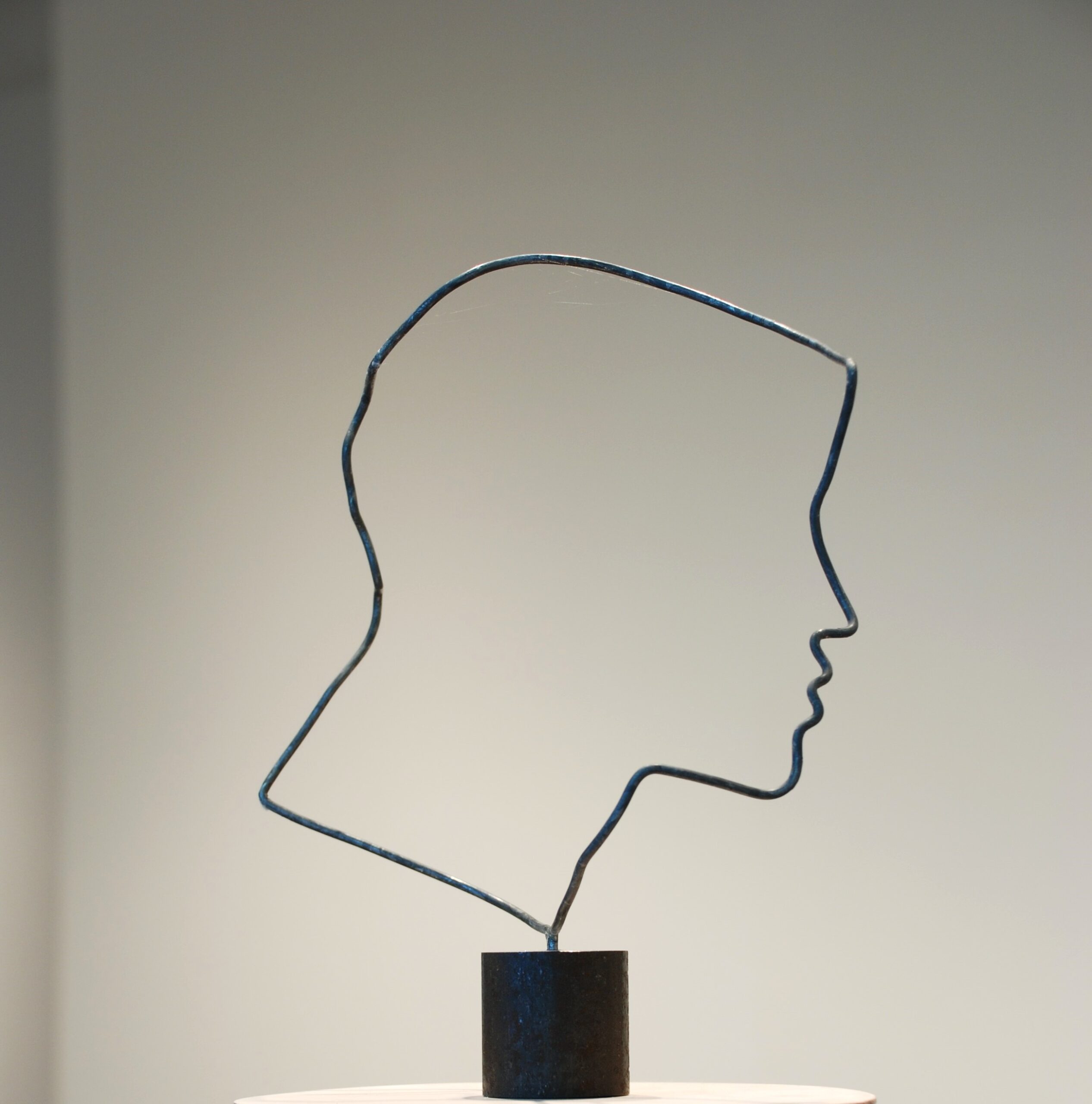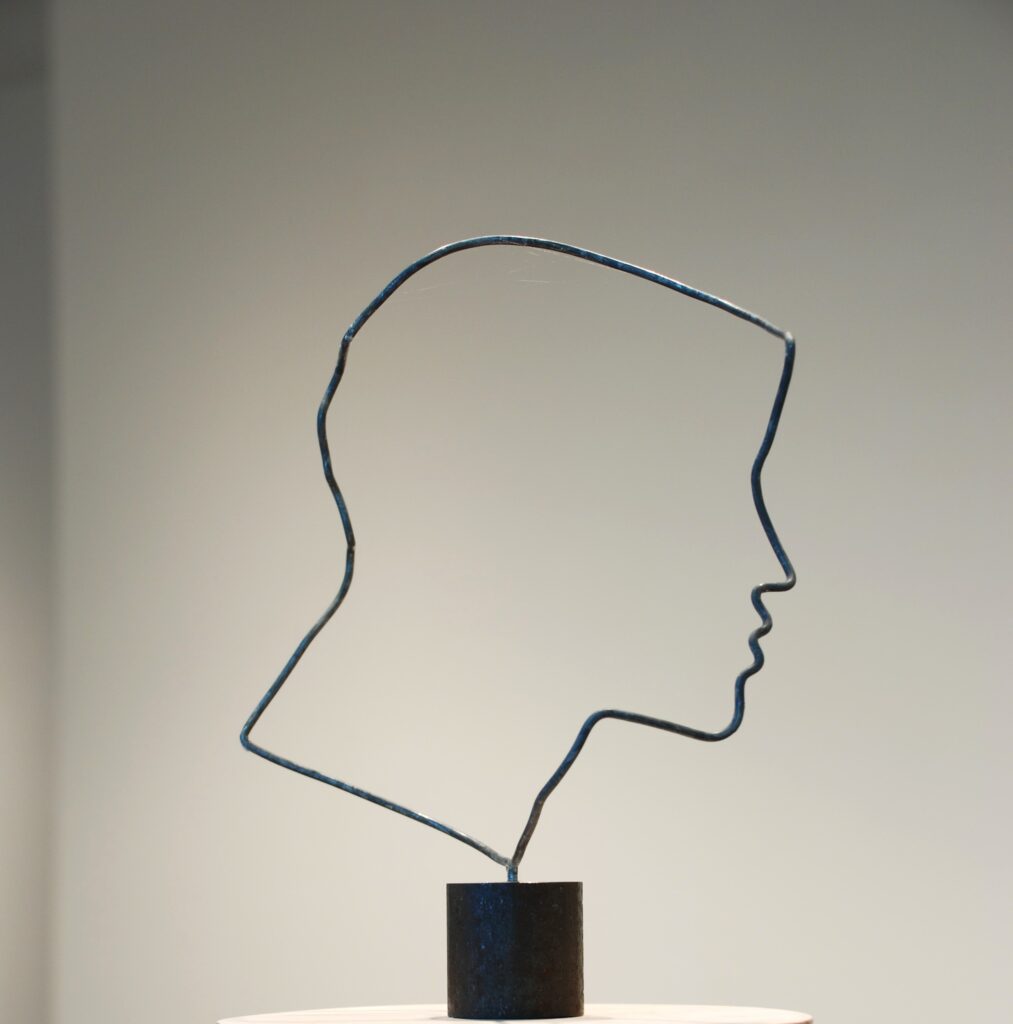Markus Raetz


Past exhibition
Markus Raetz
About the Exhibition
The Arts Club of Chicago is pleased to announce the opening of a Markus Raetz exhibition on Thursday, January 25. The exhibition features a selection of over twenty years of the Swiss artist’s sculptures, wall installations, drawings, and watercolors. It will run through April 14.
“No one else has taught us so much by and about seeing… in such a roguishly whimsical and poetically surprising way,” writes Bice Curiger, editor-in-chief of Parkett magazine. Since the 1960s, Raetz has created artworks that, while enticingly playful on one level, on additional readings reveal layer after layer of complexity. His works are not easy to categorize or define by style: they are neither abstract nor representational, nor can they be described as purely conceptual. An internationally renowned draftsman, painter, sculptor, and a master of optical illusion, the essential concern of his work is the ephemeral nature of perception. Raetz works with a variety of humble materials—eucalyptus leaves, twigs, mirrors, wire, cardboard, and glass are but a few examples—and scales (from miniature to those that encompass entire hillsides).
Since the beginning of his career, Markus Raetz has played with a type of perspectival system that is not mathematical but instead, pragmatic and intuitive. In his work, Raetz explores the distortions caused by certain extravagances of perspective, sometimes pushed to the point of anamorphosis. In his works that anamorphose, the observer is invited to modify his or her point of view in order to get to the “correct” view of the sculpture, a view in which the sculpture “snaps into place” and makes visual sense. In his pieces that metamorphose, the spectator must walk around the works to witness their various transformations.
Over the course of the past ten years, Markus Raetz has produced a series of metamorphosing sculptures. The earliest of these, Metamorphosis II, 1990–91, presents, in a single object, a face-to-face encounter between Joseph Beuys and a rabbit. This piece is followed by Non-Pipe, 1992, a sculpture that makes allusions to René Magritte’s Ceci N’est Pas Une Pipe, and that inverts, depending on one’s perspective, the order of pipe and smoke. During this time, Raetz also creates Head, 1992, a sculpture that shows the permutation of a face from top to bottom, and Large and Small, 1992, a homage to Giorgio Morandi that juxtaposes a glass and a bottle, inverting their respective scales while transforming them from one form to the other.
Like fellow Bern resident Paul Klee, drawing has always been an essential part of Raetz’s oeuvre. One of his favorite mediums, Raetz like the immediacy and process-oriented nature of drawing, its reliance on observing and looking, and the making of lines and contours—drawing’s basic elements. Several of Raetz’s drawings and watercolors, in addition to his sculptures, will be exhibited, providing viewers with an intimate look into his working and thought processes. Also included will be one of Raetz’s wall drawings, Four Heads IX, 1982–93, in which the artist uses over twenty eucalyptus leaves to create a series of four delicate portraits.
Throughout the years Raetz has explored the relationship between the concrete world and the vision that the eye presents of it. Raetz reminds us that they eye is, scientifically speaking, a lens that directs the light rays on the plate of retina through the intermediary of the brain. An image forms in relation to a reservoir of archetypes that are assembled by each individual from his or her earliest memories; the identification of the image—its recognition—is a cerebral phenomenon. There is, therefore, no “objectivity” of vision, but rather a subjective vision peculiar to each person. For centuries, the assumption of objectivity had the power to situate the observer, man, in a position of dominance with respect to the world around him. Man sees an object, names it, recognizes it, and appropriates it. Through his playful, engaging, and poetic artworks, Raetz invites viewers to reinvestigate these long-held assumptions about vision and how seeing situates us in the world.
An exhibition catalogue was published with essay by Richard Francis, former chief curator at the Museum of Contemporary Art, Chicago, and Christie’s senior 20th-century specialist.
About the Artist
Markus Raetz was born in Büren an der Aare, Switzerland, in 1941. He has lived on and off in Bern since 1963. Raetz has exhibited often in Europe and New York and represented Switzerland at the Venice Biennale in 1988, and in 1998, represented his country at the São Paulo Bienal. His most recent United States museum exhibitions were at The New Museum of Contemporary Art, New York, in 1988, and at the San Diego Museum of Contemporary Art, La Jolla, in 1990. This will be Markus Raetz’s first solo exhibition in Chicago. The exhibition will travel to the University Gallery at the University of Massachusetts, Amherst, where it will be on display from September through December 2001.